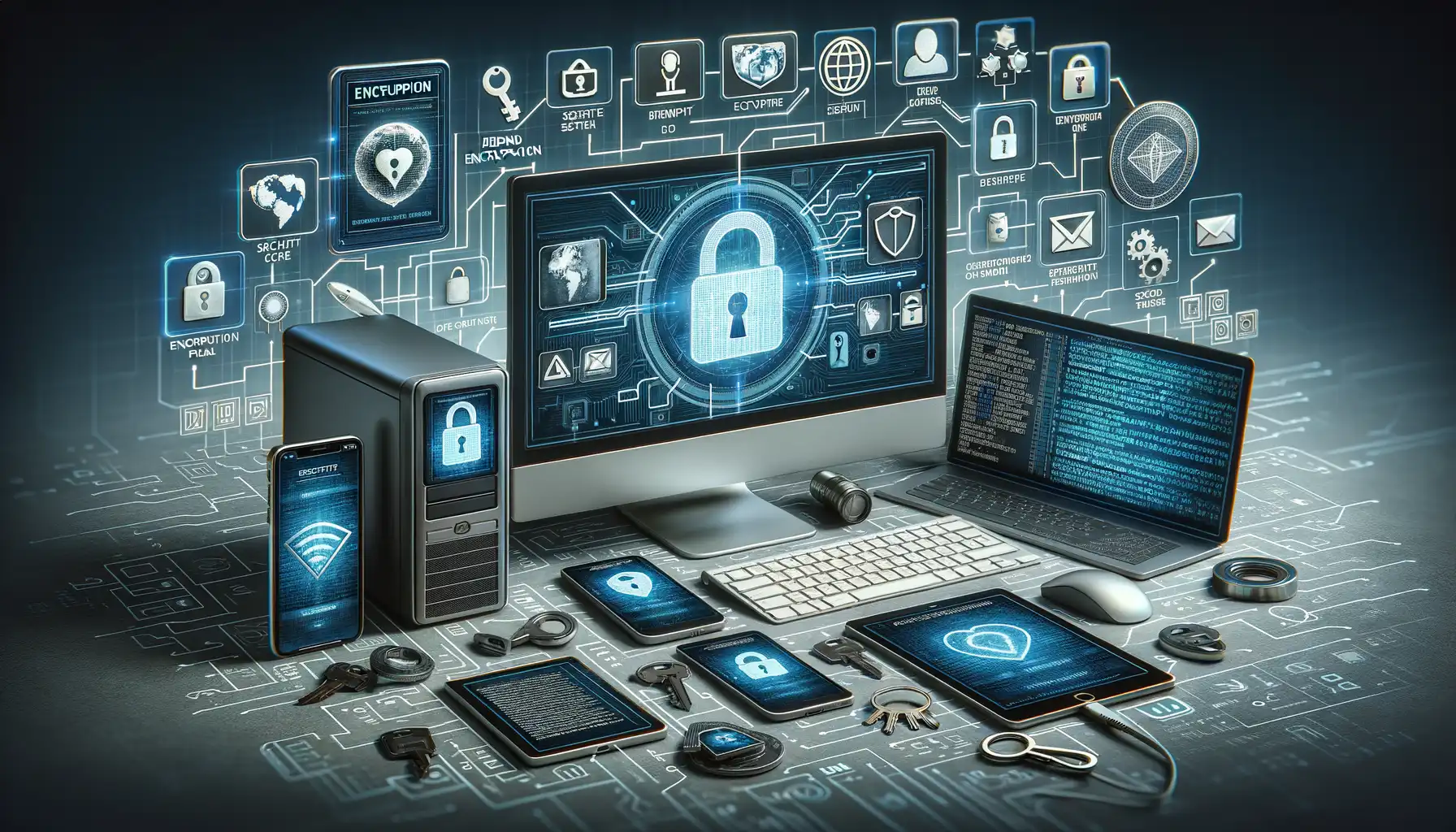Understanding End-to-End Encryption and Its Importance
What Exactly Is End-to-End Encryption?
Imagine whispering a secret to a friend across a crowded room, but somehow, everyone else hears nothing but gibberish. That’s the magic of end-to-end encryption (E2EE). It ensures that only the sender and the intended recipient can understand the message. The beauty of E2EE lies in its simplicity: your data is locked with a unique key, and only the person you trust has the matching key to unlock it. All those middlemen—apps, servers, and even prying eyes? They’re left scratching their heads.
Picture this: when you’re sharing family photos, sending bank details, or even having heart-to-heart conversations, E2EE acts like an invisible bodyguard, making sure no one steals or tampers with your words along the journey. Just think about how vulnerable we’d be without that shield.
Why Does It Matter in Today’s Digital World?
The internet is a bustling highway of information. Without safeguards like end-to-end encryption, hackers and snoopers could easily intercept your most private thoughts. Here’s why it’s game-changing:
- Privacy for all: Whether you’re sharing memes or critical business plans, your data deserves respect.
- Trust restored: With E2EE, you can communicate freely, knowing Big Brother isn’t lurking behind the curtains.
In a world where cyber threats grow sneakier by the day, E2EE isn’t just a nice-to-have—it’s the lifeboat keeping our digital lives afloat.
Benefits of Securing Online Communication

Why Prioritize Keeping Your Conversations Safe?
Imagine spilling your most private thoughts in a crowded coffee shop while everyone listens in. Sounds unsettling, right? That’s essentially what unsecured online communication feels like. Securing your exchanges online isn’t just a luxury—it’s the digital equivalent of locking the door on your personal life.
Here’s what you gain when you wrap your conversations in the protective shield of end-to-end encryption:
- Privacy that actually feels private: Only you and the person you’re talking to can see or hear the messages—no nosy third parties, no prying algorithms.
- Freedom to speak your mind: Knowing your words are protected encourages honest, authentic conversations without fear of judgment or exploitation.
- Protection from cyber villains: Hackers, spyware, and other malevolent intruders are locked out, kept far from precious data like your passwords or bank details.
It’s More Than Just Data—it’s Trust
When you protect your messages, you’re safeguarding more than information—you’re fortifying relationships. Whether you’re collaborating with coworkers or sharing secrets with friends, security strengthens trust. Without it, every interaction may feel fragile, like balancing on thin ice.
And let’s not forget peace of mind. The assurance that strangers aren’t lurking behind the scenes while you chat is priceless. After all, in a world overflowing with technology, isn’t authentic connection worth securing?
Challenges in Implementing End-to-End Encryption

The Hidden Complexities Behind Encryption Implementation
Imagine building a digital fortress to protect your personal messages, only to find that assembling the walls is far more challenging than anticipated. That’s what implementing end-to-end encryption (E2EE) feels like. While the benefits of this technology are undeniable, bringing it to life isn’t as straightforward as flipping a switch.
One major hurdle? Compatibility. Developers are tasked with ensuring that encrypted communication works seamlessly across a myriad of devices, operating systems, and apps. Think about it—your message has to make sense whether sent from an Android phone to an iPhone or from a desktop app to a smartwatch. That’s no small feat!
Then there’s the tug-of-war between privacy and usability. Sure, encrypted apps like Signal thrive on exceptional security, but adding user-friendly features like backups, syncing conversations, or even emoji reactions without exposing data loopholes? That’s a balancing act worthy of a trapeze artist.
- Global legal landscapes: Countries differ wildly in their approach to encryption. Some demand “backdoors,” while others embrace strict privacy laws. Navigating this maze is exhausting for tech companies.
- Performance trade-offs: Encryption uses significant computational power. This can cause annoying lags, especially on older devices, testing users’ patience.
When implementing E2EE, the devil truly is in the details—technical, legal, and practical. It’s worth it, but getting there takes grit!
Technologies and Tools Supporting End-to-End Encryption

Cutting-Edge Encryption Protocols
Imagine your private messages traveling across the internet like secret notes in an unbreakable safe. That’s the magic of sophisticated encryption protocols. At the heart of end-to-end encryption lies a dynamic duo: Advanced Encryption Standard (AES) and Elliptic Curve Cryptography (ECC). AES is like the sturdy steel walls of a vault, while ECC acts as the intricate lock that only the right key can open.
Technologies like the Signal Protocol take this to new heights. It doesn’t just encrypt your texts—it ensures even if someone intercepted them mid-transit, all they’d see is meaningless gibberish. WhatsApp and Messenger didn’t pick it up for nothing; it’s proven, peer-reviewed, and battle-tested.
Tools Putting Encryption at Your Fingertips
Now, let’s talk tools. Want hands-on security without getting a PhD in cryptography? These solutions deliver:
- ProtonMail: An email service built with privacy-first DNA—no prying eyes allowed.
- Signal App: Famous for its simplicity and ironclad messaging security, it’s like texting through a fortress.
- VeraCrypt: For securing sensitive files on your devices, this is your go-to digital lockbox.
These tools make protecting your digital life feel intuitive, not intimidating. By design, they wrap you in layers of encryption without breaking a sweat—or breaking the bank!
Best Practices for Strengthening Online Communication

Human-Centric Approaches to Online Conversations
Imagine your digital space as a cozy café where conversations happen freely, securely, and without eavesdroppers lurking in the shadows. To create that warmth and trust online, you need intentional practices paired with modern tools.
First, always verify who’s at the “table.” Use tools like two-factor authentication (2FA) to double-check that the person you’re chatting with is truly them—not an imposter wearing a cyber mask.
Next, set boundaries. Just like you wouldn’t shout personal details across a crowded coffee shop, avoid sharing sensitive information through unencrypted channels. Think of end-to-end encryption as the soundproof booth where only you and the recipient hear the dialogue.
And don’t forget: Maintaining trust isn’t a once-and-done task; it’s an ongoing practice. Pay attention to platform updates or unexpected requests. Is your favorite messaging app launching new features? Ensure they align with industry standards like Signal Protocol for encryption.
Simple Habits That Pack a Big Security Punch
Building better communication starts with small, actionable habits:
- Regularly update apps to patch vulnerabilities—you wouldn’t leave the front door of your house unlocked, would you?
- Disable any “save password” features on shared devices.
- Use strong, unpredictable passwords, and consider a password manager to keep track effortlessly.
Even the smallest tweaks can transform your digital conversations into a fortress of privacy and respect.


